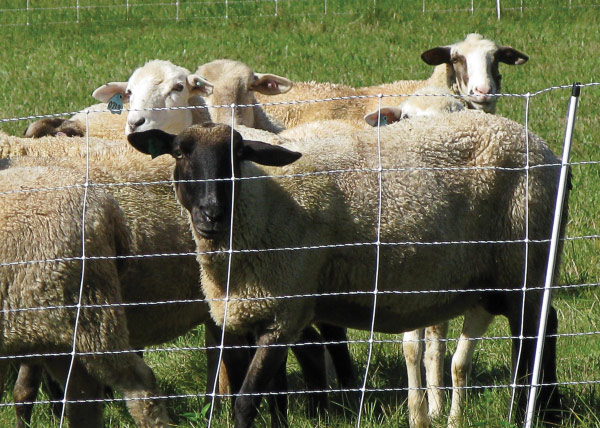Maine Leads Project Using Winter Ecology to Manage Small Ruminant Parasites
 |
|
Haemonchus contortus, barber pole worm, is a particular threat to sheep and goat farms throughout the Northeast region. Photo by Debra Heleba, Northeast SARE. |
This article first appeared in the 2019 Northeast SARE Annual Report and is reprinted with permission. The content is based upon work supported by the National Institute of Food and Agriculture, U.S. Department of Agriculture, through the Northeast Sustainable Agriculture Research and Education program under subaward number LNE14-337.
For many small ruminant operations, grazing is central to farm profitability. However, grazing livestock increases risks of losses due to parasite-infested pastures. Haemonchus contortus, barber pole worm, is a particular threat to sheep and goat farms throughout the Northeast region.
Pest Variation by Climate
Although H. contortus (as a subtropical parasite) has adapted to northern climates, Jim Weber of the University of Maine conducted a Northeast SARE Research and Education Grant project (projects.sare.org/sare_project/gne17-150/) to determine if northern New England farmers could use winter ecology to better manage this pest.
The team conducted a cold-tolerance study of H. contortus and found that parasites originating from sheep living in northern climates were more tolerant of cold conditions than parasites from sheep on farms in the Deep South, indicating that these parasites are indeed adapting to local conditions.
Testing and Teaching Control Measures
To help producers better manage these parasites, Jim and his team tested a number of control measures, including:
- Adjusting dewormer timing
- Simulating reduced photoperiods
- Increasing parasite monitoring
- Evaluating livestock stocking rates and grazing management
More than 400 farmers participated in seminars, workshops, and field days where they learned research results and received hands-on training.
As a result of newly implemented methods, the project team estimated that over 4,000 lambs in northern New England had reduced exposure to H. contortus parasitism.
A major emphasis of the project was teaching farmers methods to measure and effectively manage parasite populations on their farms.
More than 400 farmers from Maine, New Hampshire, and Vermont participated in the project’s seminars, workshops, and field days where they learned research results and received hands-on microscope training to identify and count parasite species in manure samples from their livestock. They also learned how to use FAMACHA©, a technique to easily identify animals that may have H. contortus infestations.
Effective Management Without Pesticides
One hundred twenty-two farmers implemented non-chemical methods—improving rotational grazing systems, using springtime determinations of dewormer efficacy, and basing use of dewormers on individual fecal egg counts—to control H. contortus infestations in their flocks during the grazing season.
As a result, the project team estimated that over 4,000 lambs on farms in northern New England had reduced exposure to H. contortus parasitism, reducing rates of lamb death, and likely increasing weight gain for lambs destined for the meat market.
About FAMACHA©
According to the American Consortium for Small Ruminant Parasite Control, FAMACHA© is a diagnostic tool used in small ruminants (sheep and goats) to detect internal parasites, namely Haemonchus contortus, the most common parasite and pathogenic nematode of ruminants.
Developed in South Africa, FAMACHA© uses a card system containing photos of the inside of the lower eyelid of sheep.
The user is able to compare the photos on the card to the animal to determine anemia levels caused by the parasite, from no anemia (red color) to severely anemic (white color).
This allows farmers and others to more easily identify those animals that require anthelmintic treatment.
Source: www.wormx.info/famacha
 |
|
Small ruminant producers learn how to use FAMACHA© and fecal egg counts to determine H. contortus parasite loads in their sheep and goats. Photo provided by James Weber, University of Maine. |
The Northeastern IPM Center promotes integrated pest management for reducing risks to human health and the environment. If republishing our news, please acknowledge the source (“From Northeast IPM Insights”) along with a link to our website.
